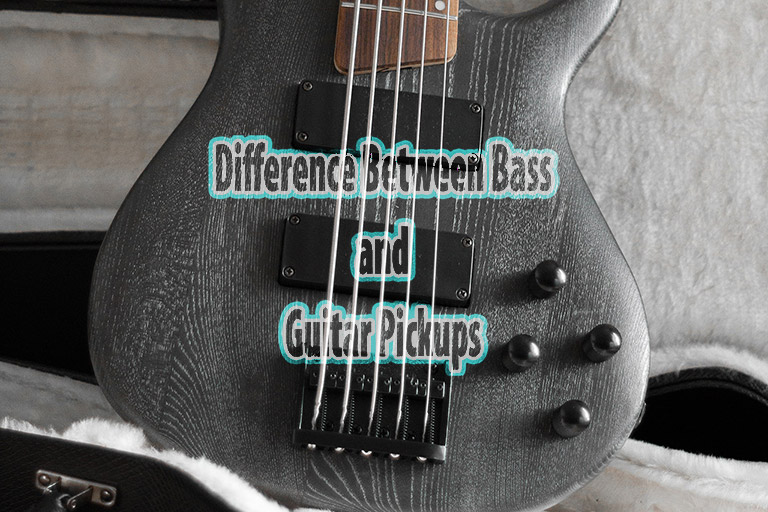Pickups are one of the essential parts of a guitar. A lot of technical expertise goes into the design and manufacturing of these. And quite a few variations exist for slightly different purposes, but all of them serve the same goal — to transform the strings’ vibrations into a signal that the amp can play. Since we know that most electric and bass guitars have what is called an electromagnetic pickup, the question that comes to mind is, are bass and guitar pickups the same? If not, what are the differences?
Most guitar and bass pickups work similarly — they are electromagnetic and have very similar (if not the same) parts inside. Installing electric guitar pickups on bass and the other way around is possible. There may be issues with the size of the pickup and the problem of the pole pieces not aligning with the string spacing, which in many cases could make the guitar/bass sound sub–par.
Despite the technical similarities, many differences between bass and guitar pickups will affect the tone and sound quality. Let’s get into the details.
The Differences Between Bass and Guitar Pickups
Most of the typical basses and guitars come with electromagnetic or magnetic pickups. In simple terms, a pickup is made up of a magnet with thousands of turns of wire wrapped around it. When the guitar strings vibrate, the pickup placed close to the strings produces a tiny current. This current or signal is then sent to an amp that amplifies it to produce the sound. Since most bass and electric guitars have magnetic pickups, we’ll use the term “pickup” to mean electromagnetic pickups for the rest of this article. With that out of the way, let us look at all the differences between bass and guitar pickups.
Spacing
String spacing is the distance between the two extreme strings (the lowest and the highest in terms of tuning). Bass guitars have a larger string spacing to accommodate the thicker strings and their vibrations when plucked. With broader string spacing, basses have wider pickups to cater to the width. In the case of using bass pickups on a guitar, the larger pickup would cover the entirety of the string width and, therefore, in all likelihood, would work and sound good. The tone could be a little more rounded and mellowed, but it depends on the specific pickup.
The reverse, when using a guitar pickup on the bass, would have a different result in terms of sound. A smaller pickup wouldn’t be able to cover the wider set of strings, with outer strings being out of the effective range of the pickups. This may result in uneven or lower volume from certain, especially outer strings. Overall, the sound produced might not be very pleasant or well–rounded; therefore, this arrangement is not recommended unless the pickup is wide enough.
Many people have successfully used bass pickups on electric guitars (and vice–versa), and even some manufacturers have done so. However, it wouldn’t be advisable to actually buy new bass pickups for guitars or the other way around. If you’re going to buy something new, why not buy something made for it? At the same time, if you are an adventurous person and like to do your experiments to find new tone styles, by all means, give this a try!
Pole Pieces
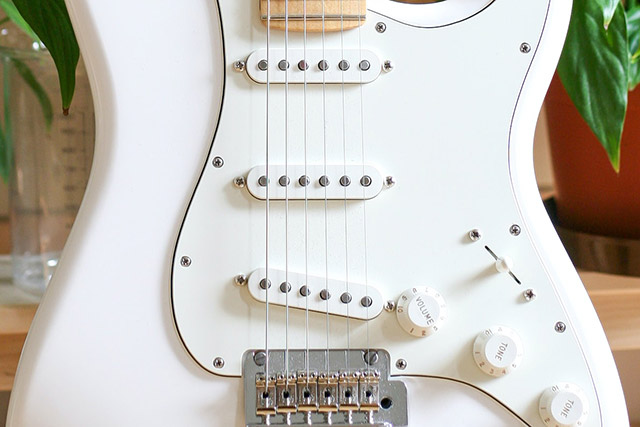
Pole pieces or magnetic pieces that are visible at the top of the pickups are another significant difference between bass and guitar pickups. Basses usually have one or two pieces per string (so either 4 or 8 for a standard four–string bass). On the other hand, electric guitars have pickups that typically have six poles. The poles are right below each string to catch their vibration. Besides being different in number, they are also differently spaced as basses have wider string spacing.
The different spacing would mean a bass pickup on a guitar would not have the poles appropriately aligned with the strings, causing variations in the output of the individual strings and making the sound uneven.
Tone Difference
There are very pronounced tone differences between a bass and an electric guitar. However, most of it is because of the thicker strings and the lower tuning. Still, with technological advances, many of the pickups have subtle differences in internal working. For example, bass pickups may have a less strong magnet and higher turns of winding wire to pick up the bass frequencies efficiently. These minor differences make the bass guitar’s sound more punchy and favour the low–end compared to guitars, which produce a more rounded, well–balanced sound.
Difference in Pickup Arrangement in Bass and Guitar
Bass guitars typically have either one or two pickups. Some may appear to have three, but the two, usually at the center or neck position, are often a pair and work together. Since a pickup very close to the bridge (as in electric guitars) would sound too bright and treble–y, basses having two pickups will often the bridge pickup slightly more away from the bridge. Electric guitars usually have one pickup mounted very close to the bridge and the second one near the neck, some guitars with three pickups will have another one in the center.
There are three common types of bass pickup arrangements: P–Style and J–Style, made famous by the Fender Precision Bass and Fender Jazz Bass, respectively; and a third one, a mix of these called the PJ–Style.
P–Style Pickup
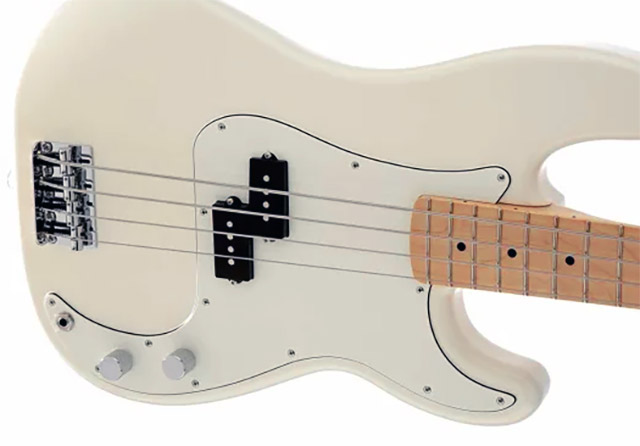
This design uses two separate pickups (working together) mounted close to each other such that one picks up the signal from the lower two strings while another picks up the signal from the higher two strings. Any noise or hum coming from this split–coil setup is cancelled as the split–coils are wired to be humbucking. This arrangement produces thicker and warmer tones with a well–rounded high–mid range compared to single coil pickups.
While regular guitar humbucker pickups have both coils inside the same pickup, the P–Style has physically separate pickups. P–Style pickup is almost always in the center (but is usually called the neck pickup), even if the bass has a second J–Style pickup.
J–Style Pickup
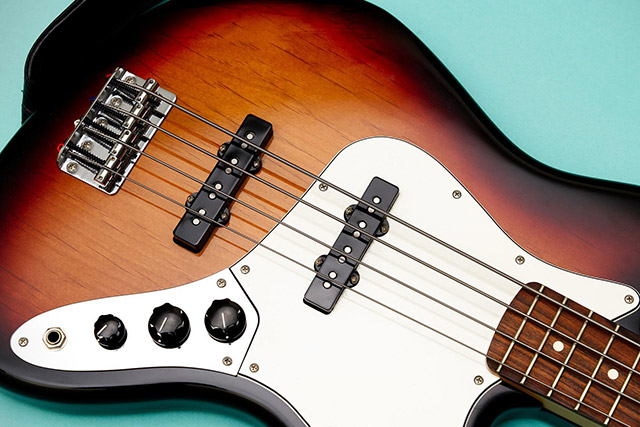
This arrangement has two single–coil pickups, one in the center and another close to the bridge. Most basses will only have volume controls for the individual pickups but not a pickup selector switch which is present in electric guitars with multiple pickups. You can use the separate volume control knobs to blend signals from each pickup depending on how you want the overall tone. Bridge pickups have a brighter tone, while those in the middle or close to the neck sound muddier and thicker.
J–Style pickups are also naturally humbucking because of thier opposite polarities. When both the pickups have the same volume or signal level, the pickups are fully humbucking. At the same time, any difference in volume level will result in more nuanced noise cancelling, often used for more interesting and versatile tones.
J–Style pickups generally have a distinctly sharper and thinner tone compared to P–Style pickups.
P/J–Style Pickup
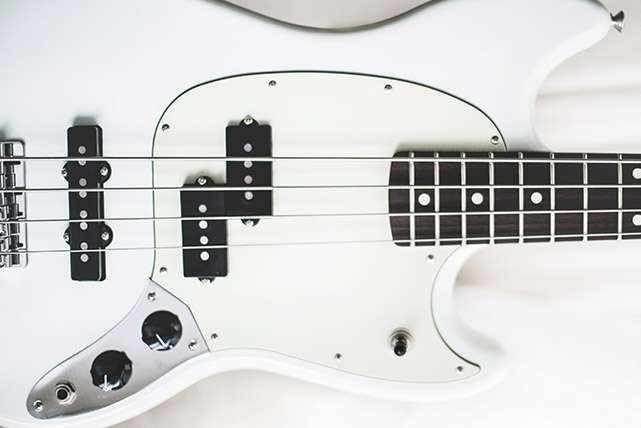
As the name suggests, these bass guitars have P–Style and J–Style pickups. Note again that there usually is no selector switch, and you’re supposed to use the volume knobs to do the blending.
While P/J basses have both the P–Bass and J–Bass pickups, they do not sound 100% like either, even when the P or J pickups are soloed and have thier distinct sound.
However, most people consider a PJ pickup arrangement very versatile. It can’t exactly replace a P–Bass or J–Bass for many people, but it is an excellent middle ground. They can be made to sound not only like both P– and J–Bass but also have their signature sound.
Examples of Interchangeable Pickups
Rickenbacker is known to use the same or very similar pickups with the difference in only the number of poles in their bass and electric guitars. One of their high–end pickup — the “toaster neck” pickup is actually a six–pole guitar pickup that they use on both guitars and basses.
Danelectro’s “lipstick” pickup is also known to be used in both guitars and basses. These lipstick pickups do not have pole pieces that have to be aligned with the strings and are, therefore, able to work well in both basses and guitars.
Final Thoughts
Bass and guitar pickups are not interchangeable for the most part. Still, since they work in the same manner internally, some musicians, as well as manufacturers, have successfully fitted bass pickups on guitars and vice–versa. Some pickups, by their construction, are more compatible with both basses and guitars, therefore more suited for such experiments. The resulting sound may also be subtly different, which is why some people do it.
We do not recommend doing such experiments on your only or your special guitar, but if you are getting something for cheap or have one you don’t use, you might want to try fitting it with bass pickups. Either you’d be pleasantly surprised, or it would all go in vain — whatever happens, it’ll be a fun little experiment!

